
Welcome to the fourteenth of our monthly newsletters. We will be bringing this bulletin to you around the middle of each month to keep you informed about Planetarium and Friends news, as well as happenings in the world of astronomy and events in our area related to science education. Visit the website for more news updates and a list of our articles.

The Friends of Arlington’s David M. Brown Planetarium held our 2022 Annual Membership Meeting on Saturday, January 22nd, 2022, at 3:00 pm EST virtually via Zoom.
We began with an eye-opening presentation by Noreen Grice entitled “A Universe for Everyone: Planetarium Accessibility Considerations”. This was followed by a review (15 MB PDF) of the year’s activities, and the business portion of the meeting, where we discussed topics related to the budget, fundraising, and the ongoing construction project.
Mysterious Object Unlike Anything Astronomers Have Seen Before
It’s a mere 4,000 lightyears away. It’s one of the brightest radio sources ever seen,
sending a beam our way about three times an hour when it’s active. But every now and then
it just disappears for a while. In some ways it resembles a theoretical object called an
ultra-long period magnetar, but we really don’t know what it is.
Starlink lost 40 satellites to a predicted geomagnetic storm
On Friday, February 4th, 40 Starlink satellites that had been launched the
previous day were sacrificed to the fires of the Earth’s atmosphere. They were prevented from
achieving orbit due to the action of a geomagnetic storm upon that thin gaseous shroud, causing it
to expand and increase its drag force upon the devices.
The geomagnetic storm was predicted by the Space Weather Prediction Center (search for Serial Number: 1635).
Information about storm prediction contributed by
Lucas Nicodemus.
Earth-like planet spotted orbiting Sun’s closest star
A team using the ESPRESSO spectrograph at the Very Large Telescope at the European Southern Observatory in Cerro Paranal, Chile has, with high confidence, observed a third planet orbiting Proxima Centauri. The planet seems to be slightly smaller than our Earth and orbits within its star’s
habitable zone. Proxima Centauri was discovered in 1917 and is only 4.2 light years
distant. Although it’s our closest star, we can’t see it with our naked eyes because it’s
a red dwarf.
Corrected identification of object about to hit the Moon
Many recent media reports have stated as fact the imminent collision of a SpaceX rocket stage
from the launch of the
DSCOVR mission with the Moon. However, the object expected
to collide with the Moon this March 4th is more probably the booster for the Chang'e 5-T1 lunar mission.
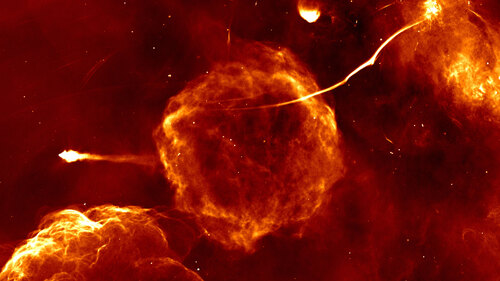 Credit: South African Radio Astronomy Observatory
Credit: South African Radio Astronomy Observatory
Stunning New Radiotelescope Images
of the Galactic Center
The South African Radio Astronomy Observatory (SARAO) released stunning new radio-frequency images of the central Milky Way region taken with its MeerKAT radiotelescope. These are the most detailed radio-frequency images ever produced. They show numerous astronomical features, including the region around the Milky Way's central supermassive black hole, supernova remnants, and star-forming regions. In addition, it shows many radio-emitting magnetized threads, linear structures up to 100 light-years long that glow brightly in radio waves. The first of these were discovered 35 years ago, but they are still not well understood. The images accompany a large dataset which is being released to astronomers to learn more about these structures. Contributed by Jim Edwards-Hewitt.
The planet just got a little safer. ATLAS is the NASA-funded Asteroid Terrestrial-impact Last Alert System, and it’s now able to search the entire dark sky every 24 hours for near-Earth objects that potentially threaten the Earth and the Planetarium. The expanded sky coverage is due to the addition of two observatories in South Africa and Chile, providing coverage of the southern hemisphere. ATLAS is operated by the University of Hawaiʻi Institute for Astronomy for NASA’s Planetary Defense Coordination Office, reorganized in 2016 to provide warnings to the President of potentially dangerous asteroids, errant alien spacecraft, and Michael Bay movies.
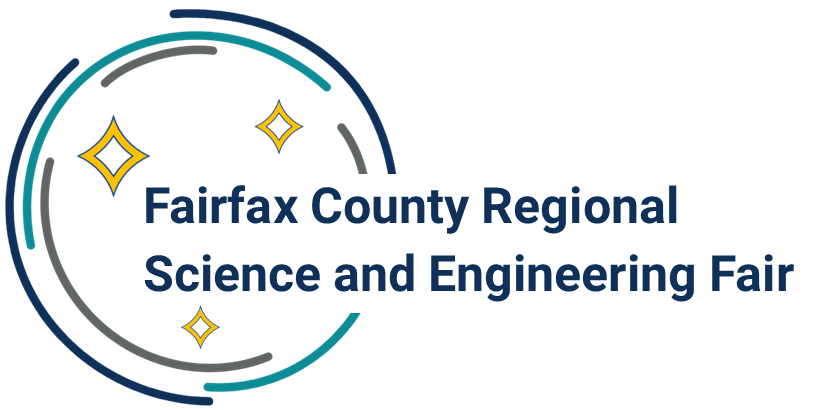 Are you interested in
science and technology education? Do your friends sometimes accuse you of being judgemental?
Consider using your powers for good by volunteering as a science fair judge
for the Fairfax County Regional Science and Engineering Fair, to take place March 9–20.
The registration
deadline is March 8th, and the pay for judges tops out at $0/day.
Are you interested in
science and technology education? Do your friends sometimes accuse you of being judgemental?
Consider using your powers for good by volunteering as a science fair judge
for the Fairfax County Regional Science and Engineering Fair, to take place March 9–20.
The registration
deadline is March 8th, and the pay for judges tops out at $0/day.
_(cropped).jpg) Dr. George Carruthers, in clean-room garb, with his
ultraviolet instrument.
Dr. George Carruthers, in clean-room garb, with his
ultraviolet instrument.
Dr. George Carruthers (1939-2020), an African-American physicist and inventor, developed the far ultraviolet telescope and spectrograph used by Apollo 16 astronauts to study the outer layers of the Earth’s atmosphere and interstellar space. It remains the only astronomical instrument sent to the Moon. He was the first to detect molecular hydrogen (H2) in outer space. He also imaged Haley’s Comet in ultraviolet. Ultraviolet light has a shorter wavelength than our eyes can detect. Because our atmosphere absorbs much of the incoming ultraviolet light, astronomers use instruments on sounding rockets and satellites to study the universe as revealed by this type of light. Carruthers used it to study the interactions of ionized particles from the solar wind with our atmosphere, such as the aurora. Contributed by Jennifer Lynn Bartlett.
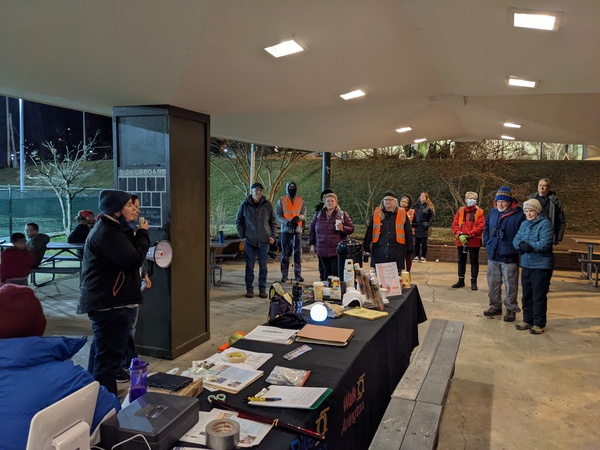
On Wednesday evening two fantastic astronomy-themed walks were enjoyed by about 80 Arlingtonians, co-sponsored by WalkArlington and the Friends of David M. Brown’s Planetarium. The discussions were hosted by our very own Jennifer Bartlett, astronomer and President of FOAP. We all met at the Bluemont ranger station and greeted participants warmly with hot tea and cocoa, and at about 5:30pm we set out on our journey. The hour-long walk was accompanied by three astronomical discussions and ended with multiple telescope viewings of the moon and stars on Reevesland. At our first stop, Jennifer discussed the sunset, sunrise, and the three phases of twilight: civil, nautical, and astronomical. Then we had an interactive discussion about astronomy, and on our second stop we learned about the lunar phases and children had fun as they participated by acting as the Earth, Moon, and Sun! As we made our way to Reevesland, Jennifer generously chatted with many patrons and shared her knowledge and incredible experience studying in the Arctic for two months. Upon arrival at Reevesland, we learned about her teachings at the Naval Academy and had a discussion about using the Sextant tool to measure latitude and longitude. We then ended with a great view of the moon and stars using telescopes provided by NOVAC members Peter Shortsleeves and Alan Miller. Contributed by Wendy Benvenga with further contributions from Jennifer Lynn Bartlett and Kathi Overton.
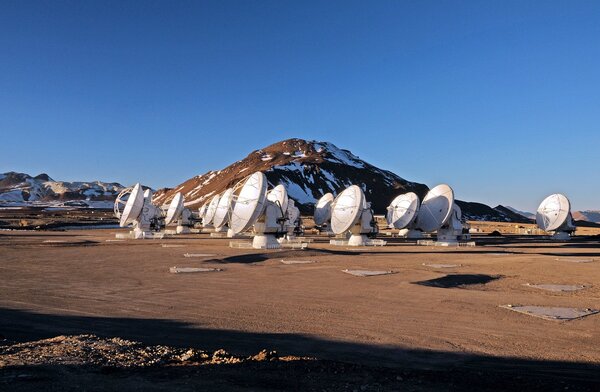
Telescopes are instruments used to collect and focus light radiation emitted (or reflected) from objects in space. In previous articles, we discussed the most common types of optical telescopes in use. But optical scopes only work in the visible part of the electromagnetic spectrum. There are other wavelengths, not visible to our eyes, that we can also collect and use. Radio telescopes consist of a radio antenna, a receiver, an amplifier and a data analyzer. The antenna is often a parabolic dish, which gathers and focuses the waves (using reflectors) onto the receiver. Because radio waves are so long, these dishes are often very large, with the biggest ones measuring hundreds of meters across! To make radio scopes even more sensitive, multiple dishes are often clustered in arrays. The faint radio signals that reach the receiver are amplified and recorded as data in a computer, which can then be analyzed and converted into a representative image. One of the advantages of radio telescopes is that they work in daylight, so they can be used around the clock! There are several very powerful radio telescopes in use around the world today, mostly located in remote areas. This is because the strong radio frequencies emitted by modern electronics cause interference, drowning out the faint signals from space. Contributed by Kathi Overton.
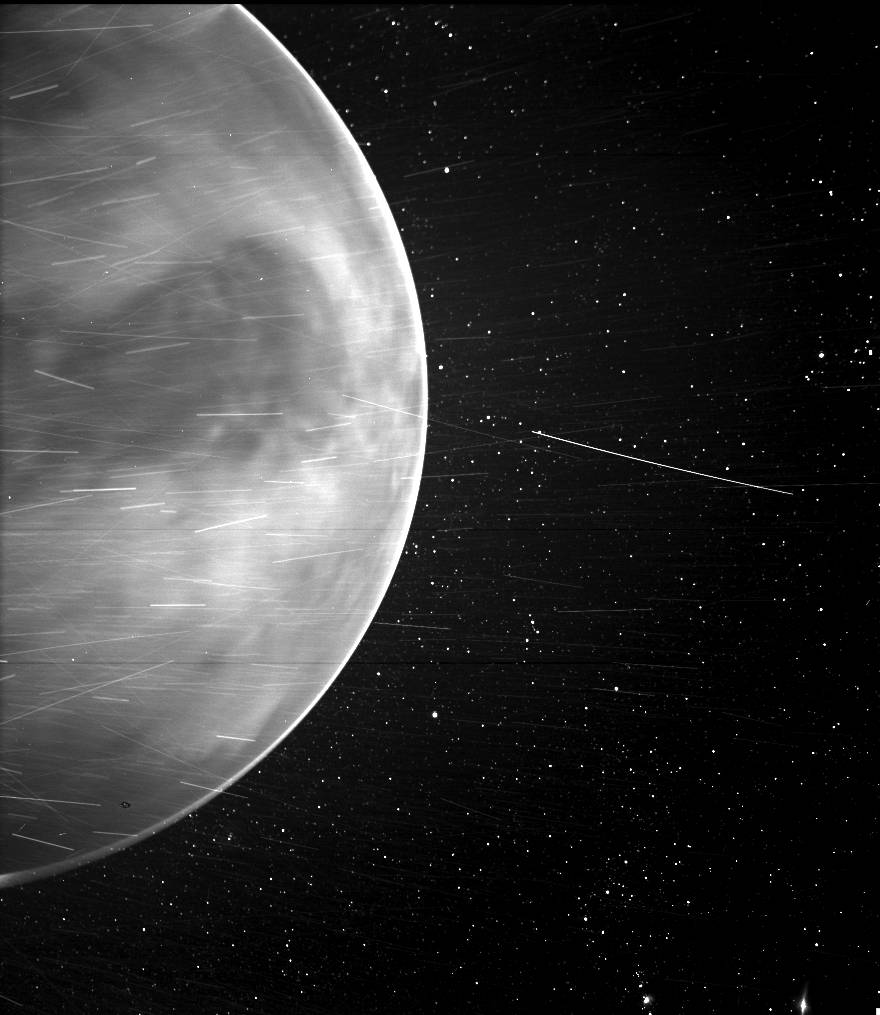
NASA’s Parker Solar Probe provided exciting new images of the surface of Venus during a flyby of the planet. Using its WISPR instrument, which is designed to look at features in the solar atmosphere, the probe took images of the night side of Venus. While scientists were hoping to measure the speed of Venus’ dense clouds, they found that WISPR could actually see through to the surface in the near infrared wavelengths.
Contributed by
Kathi Overton.
On Thursday, January 20, the Arlington School Board approved $220,000 in year-end closeout funds to update the projection system in the David M. Brown Planetarium. The Friends are delighted that the Planetarium will re-open ready to support the Arlington science curriculum with immersive science programming that reflects the latest discoveries. Field trips to the Planetarium inspire our students to engage with their science classes, to appreciate the world around them, and to develop their science literacy. The Planetarium has been closed since December 2019 due to construction at the adjacent Education Center. The Friends will also be investing in the new system, state-of-the-art programming, and other improvements associated with the re-opening. Consider contributing to this effort yourself through a donation to the Friends’ projector fund. Contributed by Jennifer Lynn Bartlett.
Successfully launched on December 21, 2021, the James Webb Space Telescope
(JWST) is cooling to reach the -370° F mirror temperature required for
science operations. On February 11, NASA revealed the first engineering
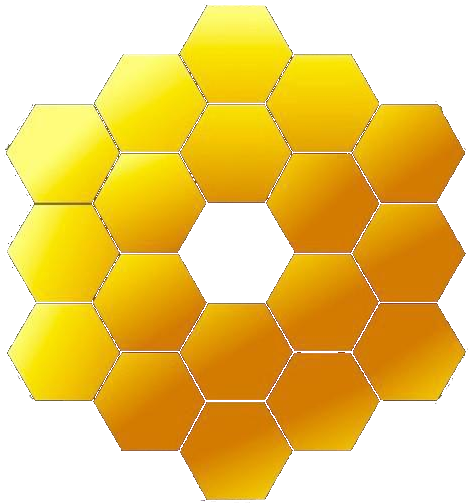 images of HD 84406, the star that it is using to align the telescope’s 18
gold-plated mirrors. HD 84406 is a G-type star like our Sun located about
260 lightyears away in the constellation Ursa Major. Over the next month,
NASA will adjust the individual mirror segments so that they work together
to produce a single, focused image of a star rather than 18 separate,
fuzzy images. However, the successful production of these calibration
images is a major milestone. Eventually, JWST will reveal the infrared
universe in unprecedented detail. Infrared light has a slightly longer
wavelength than our eyes can detect, and can reveal the
earliest galaxies and stars in the process of forming.
Contributed by
Jennifer Lynn Bartlett.
images of HD 84406, the star that it is using to align the telescope’s 18
gold-plated mirrors. HD 84406 is a G-type star like our Sun located about
260 lightyears away in the constellation Ursa Major. Over the next month,
NASA will adjust the individual mirror segments so that they work together
to produce a single, focused image of a star rather than 18 separate,
fuzzy images. However, the successful production of these calibration
images is a major milestone. Eventually, JWST will reveal the infrared
universe in unprecedented detail. Infrared light has a slightly longer
wavelength than our eyes can detect, and can reveal the
earliest galaxies and stars in the process of forming.
Contributed by
Jennifer Lynn Bartlett.
Are you passionate about giving young people an opportunity to pursue a college education? Do you think educating a new generation of scientists and engineers is important? Do you have a few hours a month to devote to promoting the David M. Brown Scholarship? The Friends are seeking a volunteer to focus on this important scholarship program: publicizing it to the community, coordinating with the Arlington Community Foundation, developing criteria to measure its effectiveness, and raising dedicated funds. Each year, the Friends sponsor a $2,000 renewable scholarship to assist a senior graduating from the Arlington Public Schools in pursuing an undergraduate degree in science, technology, engineering, or mathematics. The Scholarship honors former astronaut and Arlington student David M. Brown. It is funded in part by Giving Tuesday donations. The Arlington County Foundation administers the scholarship on behalf of the Friends. Contact us for more information. Contributed by Jennifer Lynn Bartlett.
Edited by Lee Phillips and anonymous assistants who are responsible for any errors.